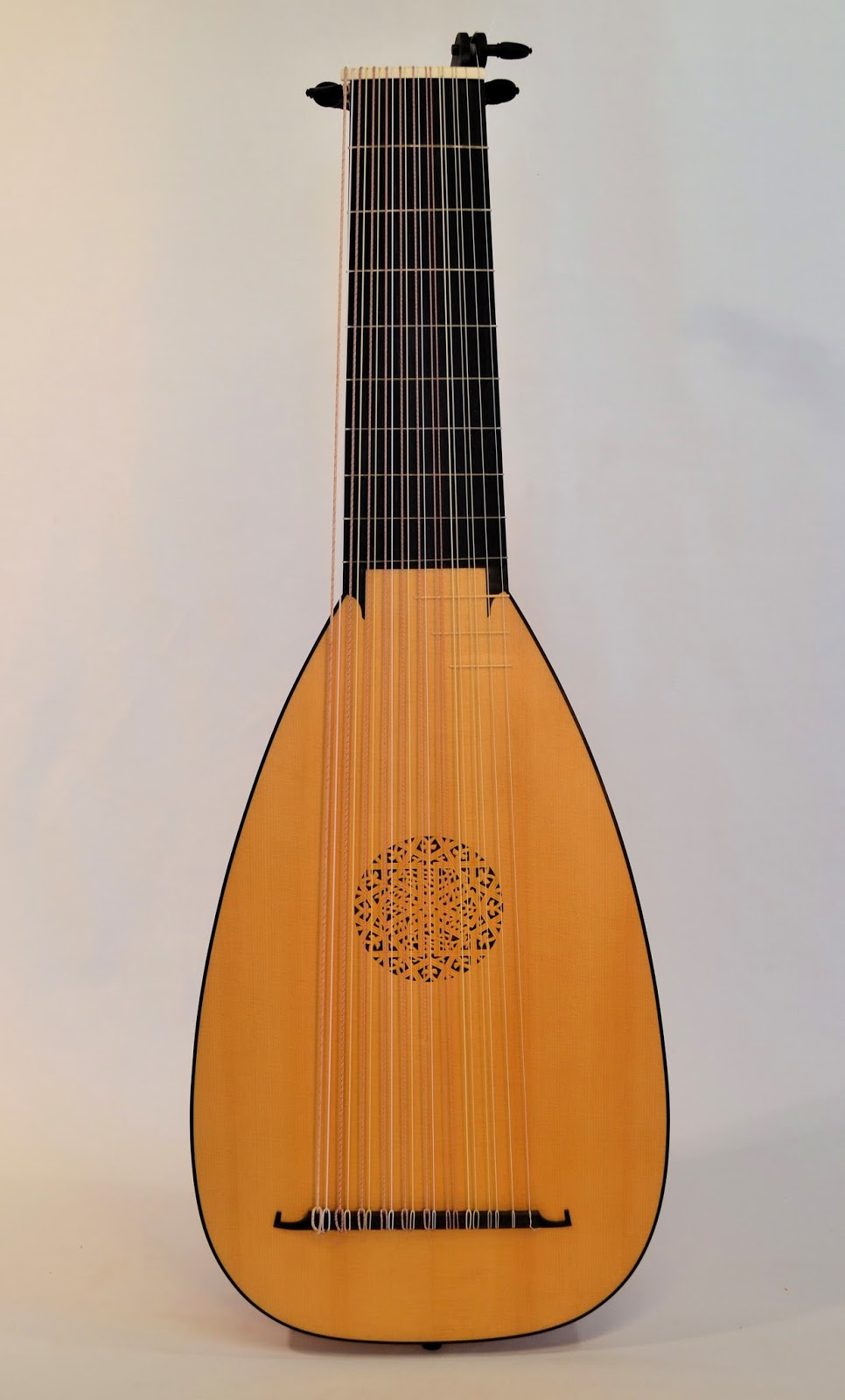Let's start with the most strings first. This is an 11 course lute, based on the Warwick Frei, for Dr. Gary Boye, of Boone, NC.



The back is of eastern hard curly maple, the belly of spruce from Switzerland. The neck and pegbox are veneered in ebony.
The rose, whose pattern is taken from the original Hans Frei lute in the Warwick County Museum, is a favourite of mine, and I've talked about its mystery and beauty in this blog before.
The second lute, with the second-most strings of the three, is a 10 course based on my reduced version (95%) of the body of the Tieffenbrucher archlute, C45 in the Vienna Kunsthistorischesmuseum. I built it for Philippa Dunne, of Huntersville, NY. This lute has become a popular model with me over the last few years, and I've built 7, 8 and 10 course versions of it with excellent results. If anyone would care to try a 9c based on this model, just to complete the set, please let me know!
The back is of 17 pacific Yew ribs, with sycamore spacers. For the 10 course model the string length is 64cm, which gives this lute 10 frets on the neck, with 9 of tied gut and the 10th of English boxwood.
The rose is the familiar "knot of leonardo" pattern, with a chip-carved border; this feature is a nod to the rose of the Harton 10 course lute in the Folger Shakespeare Library.
The last lute to introduce today is a 6 course, which I built for myself. It's not often that a lute maker finds the time to build himself a new instrument, and I was able to do so only because in the summer of 2012 I sold my previous lute, a 6 course after the small Frei, to Nelson Amos, of Ypsilanti, MI. I loved that lute; it was my stalwart since I built it in 2007. But many things had happened in my life, and in my lute making practice, since I made that lute, and over the years I had formed many ideas of what I would want in a new instrument: what string length, what size and shape, what sound, what physical features concerning action and playability. At the risk of sounding a bit grandiose, it was time to proclaim anew the state of the art of my lute making. So here it is: 6 courses, 60cm string length, back of birdseye maple, the body shape of my own design, based on early 16th century Italian iconography. I like my new lute a lot. We get along really well, and look forward to getting to know each other very well over the years to come.
Grant Tomlinson taught me how to carve these flower-ends in a 6c bridge (Grant taught me just about everything I know).
Here's a nice detail shot showing soundboard, english boxwood body frets, pear fingerboard extending into the soundboard area, snakewood neck edging, pear binding around the belly. Wood is beautiful!
The rose is my version of the Gerle pattern, which I've spoken about elsewhere. What other choice did I have for my own lute, but what I consider to be the fundamental lute rose pattern?
That is all for now. Stay well until we meet again; I'm off to play the lute.















